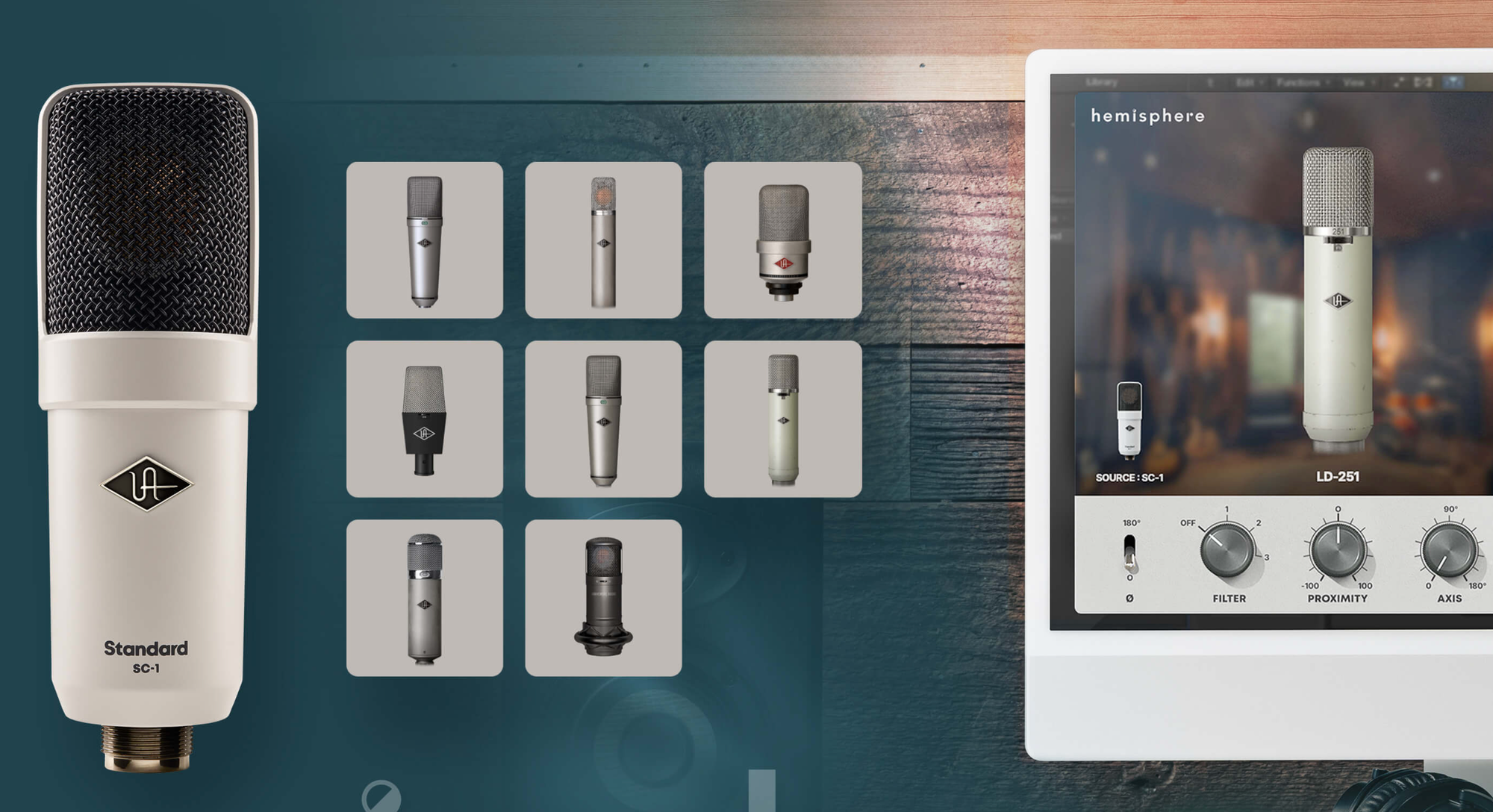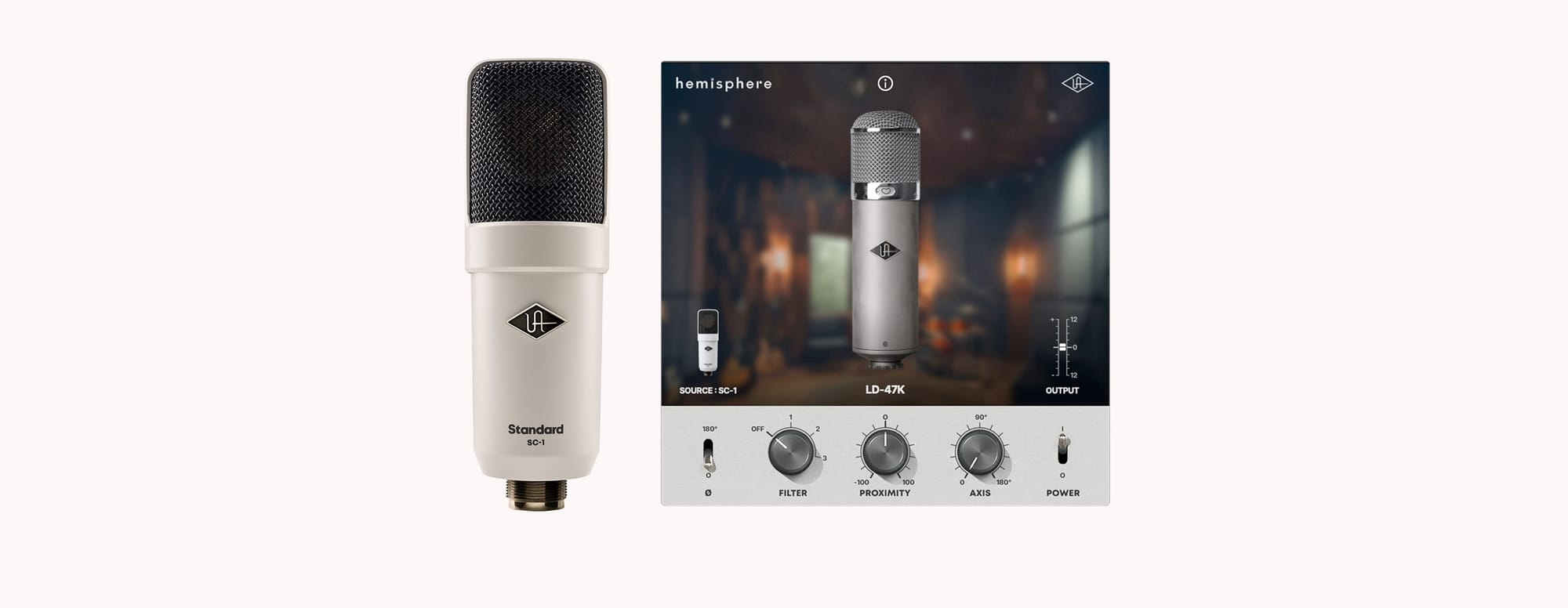My time with the Universal Audio SC-1
Today, after using it every day for a couple of months, I'd like to share my thoughts about the Universal Audio SC-1. Full name apparently is THE UNIVERSAL AUDIO STANDARD CONDENSER MICROPHONE WITH HEMISPHERE MODELING... I'll go with just the SC-1 thank you.

Listen, I'm not a paid columnist or a serial reviewer, but from time to time, if I think it's valuable to someone else, I'll share my thoughts and experiences with pieces of gear or software. Today, after using it every day for a couple of months, I'd like to share my thoughts about the Universal Audio SC-1. Full name apparently is THE UNIVERSAL AUDIO STANDARD CONDENSER MICROPHONE WITH HEMISPHERE MODELING... I'll go with just the SC-1 thank you.

Why should you listen to me? Well, if you are hip to the rest of my blog, you'll know that I record a lot of words daily, like on average 12,000 for a variety of clients, but mostly one... but that's not really important now.. AND, I've also been able to use, live with, and love/hate a variety of mics during my career and I'm keenly interested in how technology is advancing to improve the ease and quality of our finished product for decreasing investment all the time. Anyway, professionally, as a daily driver, I've used my lovable Aston Origin, a Shure SM7B, a Rode NTG5, my big Advanced Audio U67 clone from the 80's (tube mic), and for in-studio work, the pedestrian Rode NT1 and Audio Technica 2020. It's a pretty diverse range for someone like me who doesn't have a huge mic closet and isn't in the habit of collecting them. Anyway, what is the SC-1 and what makes it different? Is it any good? Is it worth 500 USD? Why is it a "modeling" mic and what does that mean? Why use it for VO (or why not)? In the following, I'll try to answer all this with a minimum of fluff or obscure references to new VO people.
So, from the top, the SC-1 is the "entry" level LDC mic from Universal Audio that features a robust build, a snazzy light cream color, and access to the world of UA's Hemisphere Microphone Modeling technology. Without getting too geeky, the modeling part is pretty cool and it is supposed to make your mic (the SC-1) sound and act like a range of 8 of the most sought-after mics in history. They don't label them literally because of legal reasons I'm guessing, but many of the mics that this can sound like are some extremely expensive mics and it really does a great job at that.
With the mic, you get a really cool rigid custom molded carrying case with a microphone mount. I know, it's not a shock mount, but whatever, the case is really cool and useful if you're like me and travel a lot. The mount is rock solid and for most VO people they don't actually NEED a shock mount if they are careful and live in a quiet place, but most of us use them regardless. (and they look really professional, and I don't have to be as careful with touching my shelf/desk or whatever). On the mic itself, there are zero switches, buttons, or controls, but just a glance through the windscreen and you'll see that whatever capsule is in there seriously looks like it means business.
When you plug it in, if you don't have a UA account, you'll have to get one (it's free) and then you register your SC-1 as a new piece of hardware/mic. In the account-building process you'll also have to download UA connect and that's where that'll happen. Also in there is where, after registering your new mic, you will download the Hemisphere modeling software. The bigger brothers/sisters of the SC-1 sport two capsules, a 7-pin cable, two channels of input, and a huge array of modeling options, but the SC-1 is more modest, but I think more appropriate for my purposes in VO. Meaning that some seem to be "do-it-all" mics, are created and marketed as a viable option to collecting the world's most desirable mics in favor of ONE MIC TO RULE THEM ALL. That mic could be used for kick drum, acoustic guitar, vocals, elephant noises, figure 8 patterns, all kinds of things that you could ever think of, but we voice artists really don't need that. We need a mic that captures every nuance of our voice, sounds a tad better than "natural", and doesn't require a bunch of outboard gear to make it work. For that, the SC-1 really not only fits the bill, but I'm sold.